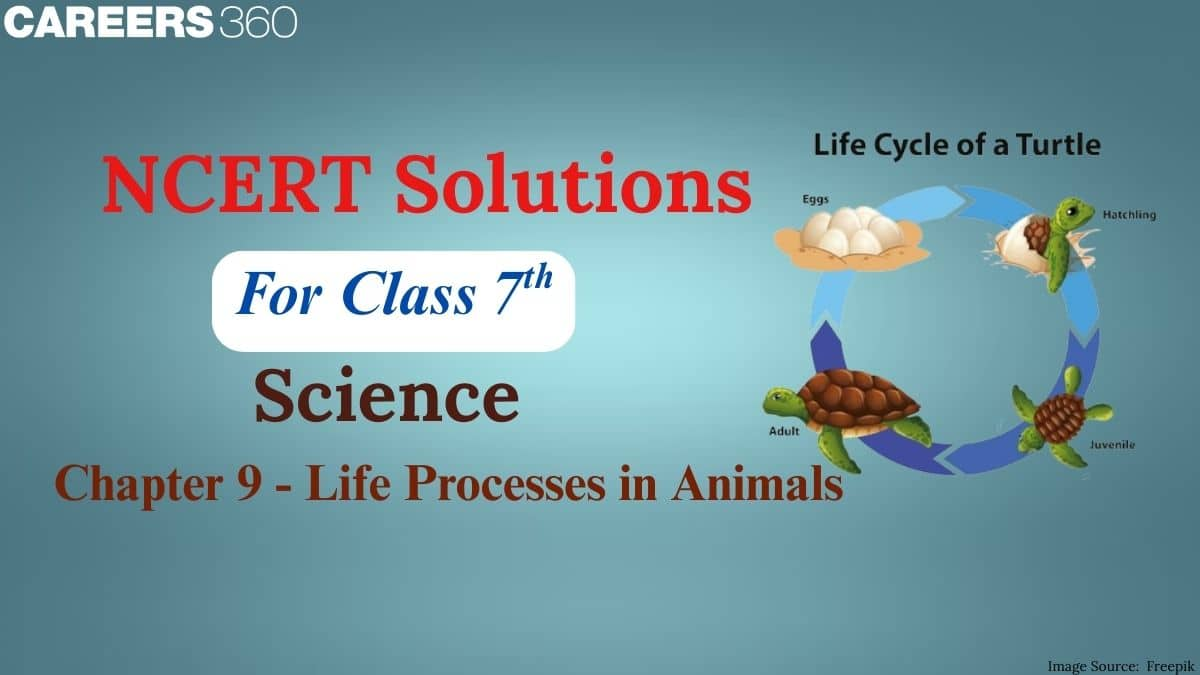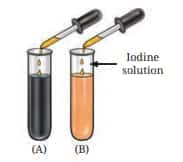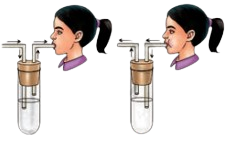Nutrition is the process by which living organisms take in food, break it down, and use it for growth, energy, and the repair of body parts. It is essential for maintaining health and carrying out life processes.
NCERT Solutions for Class 7 Science Chapter 9 - Life Processes in Animals
The NCERT Solutions for Class 7 Science Chapter 9 Life Processes in Animals explain important processes like breathing and digestion. These processes occur in both animals and humans. How living beings perform different functions to stay alive and healthy is also added. All the solutions are prepared by subject experts in clear and simple language. The NCERT Solutions are a valuable resource for students to study regularly and revise effectively during exams.
This Story also Contains
- Download Life Processes in Animals Class 7 Questions and Answers PDF
- Access Class 7 Science Chapter 9 Life Processes in Animals Question Answer
- Approach to Solve Life Processes in Animals Class 7 Question Answer
- Important Topics from Class 7 Science NCERT Chapter 9
- Important Questions from Class 7 Science NCERT Chapter 9
- What Will You Learn From Life Processes in Animals NCERT Solutions?
- Why Class 7 Science Chapter 9 Life Processes in Animals NCERT Solutions are Important?
- NCERT Solutions for Class 7 Science Chapter-Wise

Life Processes in Animals Class 7 question answer builds a strong foundation for higher classes. Colorful pictures and illustrations make learning more interesting and improve visual learning. Various flow charts of how oxygen is taken in and how food is broken down to release energy are included. Students can clearly see which organs are involved and how each process takes place. Life Processes in Animals Class 7 questions and answers PDF is also available, which follows the NCERT guidelines, so that students can learn topics in a simple way.
Download Life Processes in Animals Class 7 Questions and Answers PDF
Students can understand how animals perform life processes like breathing and digestion. They can download the PDF from the link given below. The Life Processes in Animals Class 7 questions and answers PDF can be used offline anytime, anywhere, for quick revision and doing homework as well. The NCERT Solutions for Class 7 make learning simple and effective.
Access Class 7 Science Chapter 9 Life Processes in Animals Question Answer
The answers are written in a well-understandable language, by which students can score better marks in the exam. Doing regular practice of the Class 7 Science Chapter 9 Life Processes in Animals question answers improves the understanding and confidence.
Question 1. Complete the journey of food through the alimentary canal by filling up the boxes with the appropriate parts—
Food → Mouth → _______ → Stomach → _______ → _______ → Anus
Answer:
The complete journey of food through the alimentary canal to the anus is given below:
Food → Mouth → Esophagus → Stomach → Small Intestine → Large Intestine → Anus
Question 2: Sahil placed some pieces of chapati in test tube A. Neha placed chewed chapati in test tube B, and Santushti took boiled and mashed potato in test tube C. All of them added a few drops of iodine solution to their test tubes—A, B, and C, respectively. What would be their observations? Give reasons.
Answer:
Test Tube | Observation | Reason |
A) Chapati | Iodine turns blue-black | Chapati contains starch, and iodine gives a blue-black color when starch is present. |
B) Chewed Chapati | Iodine shows little or no blue-black color | During the chewing process, saliva breaks down the starch into sugar. So, very little or no starch is present. |
C) Boiled and mashed potatoes | Iodine turns blue-black | Potato also contains starch, and iodine reacts with it and turns blue-black. |
Question 3: What is the role of the diaphragm in breathing?
(i) To filter the air
(ii) To produce sound
(iii) To help in inhalation and exhalation
(iv) To absorb oxygen
Answer: (iii) To help in inhalation and exhalation
Explanation:
The diaphragm is a dome-shaped muscle that is present below the lungs. It moves down when a person inhales and moves up when they exhale. In this way, air enters and leaves the lungs, which is an important part of the breathing process.
Question 4: Match the following
Name of Part | Functions |
(i) Nostrils | (a) Fresh air from outside enters |
(ii) Nasal Passage | (b) exchange of gases occurs |
(iii) Windpipe | (c) protects lungs |
(iv) Alveoli | (d) Tiny hair and mucus help to trap dust and dirt from the air |
(v) Ribcage | (e) Air reaches our lungs through this part |
Answer:
Name of Part | Functions |
(i) Nostrils | (a) Fresh air from outside enters |
(ii) Nasal Passage | (d) Tiny hair and mucus help to trap dust and dirt from the air |
(iii) Windpipe | (e) Air reaches our lungs through this part |
(iv) Alveoli | (b) exchange of gases occurs |
(v) Ribcage | (c) protects lungs |
Question 5: Anil claims to his friend Sanvi that respiration and breathing are the same process. What question(s) can Sanvi ask him to make him understand that he is not correct?
Answer:
To make Anil understand that he is not correct, Sanvi can ask the following questions:
Does the process of breathing release energy like respiration does?
Can you explain how breathing and respiration happen in different organs?
Why do we need oxygen when we breathe in? What does it do inside our bodies?
Question 6: Which of the following statements is correct and why?
Anu: We inhale air.
Shanu: We inhale oxygen.
Tanu: We inhale air rich in oxygen.
Answer: From the above statements made by Anu, Shanu, and Tanu, only Anu is correct.
Explanation: It is because we inhale air, not just oxygen. Air is a mixture of different gases, out of which only about 21% is oxygen. So when we breathe in, we take in the air that contains oxygen along with other gases such as nitrogen, carbon dioxide, etc. That’s why the statement made by Anu is correct.
Question 7: We often sneeze when we inhale a lot of dust-laden air. What are possible explanations for this?
Answer:
Sneezing is a natural reaction that protects our respiratory system. When we inhale a lot of dust-laden air, the dust particles irritate the linings of our nose. This irritation then sends a signal to the brain, which causes sneezing. This sneezing forcefully then removes the dust and harmful particles from our nose. Thus, this reaction helps to clean the nose and respiratory pathway.
Question 8: Paridhi and Anusha of Grade 7 started running for their morning workout. After they completed their run, they counted their breaths per minute. Anusha was breathing faster than Paridhi. Provide at least two possible explanations for why Anusha was breathing faster than Paridhi.
Answer:
Two possible explanations for why Anusha was breathing faster than Paridhi are:
Anusha might be less fit or less used to running, so her body needs more oxygen and removes more carbon dioxide, which makes her breathing faster.
Anusha could have run faster or for a longer time than Paridhi, so her body needs to work harder to get enough oxygen.
Question 9: Yadu conducted an experiment to test his idea. He took two test tubes, A and B, and added a pinch of rice flour to the test tubes, half-filled with water, and stirred them properly. To test tube B, he added a few drops of saliva. He left the two test tubes for 35–45 minutes. After that, he added iodine solution to both the test tubes. Experimental results are shown below. What do you think he wants to test?

Answer:
By conducting this experiment, Yadu wants to test how saliva helps in the digestion of starch.
Explanation:
Rice flour contains starch, and Iodine changes its color and turns black when starch is present.
In test tube A, starch does not get digested as no saliva is present in that test tube, so iodine turns black in color.
In test tube B, saliva, which is added by Yadu, has broken down the starch, and that's why iodine does not change its color.
This shows that saliva helps in breaking down starch into simpler sugars.
Question 10: Rakshita designed an experiment taking two clean test tubes, A and B, and filled them with lime water. In test tube A, the surrounding air that we inhale was passed on by sucking air from the pipe, and in test tube B, the exhaled air was blown through the pipe. What do you think she is trying to investigate? How can she confirm her findings?

Answer:
What is she trying to investigate?
With the help of this experiment, Rakshita is trying to find out whether exhaled air contains carbon dioxide or not.How can she confirm her findings?
Once the experiment is done, Rakshita will observe what happens to the lime water present in both the test tubes.
If the lime water present in test tube B, in which the exhaled air was passed, turns milky, it means that carbon dioxide is present in the exhaled air.
If the lime water present in test tube A, having surrounding air, remains clear, then it shows that the surrounding air has very little carbon dioxide compared to exhaled air.
Approach to Solve Life Processes in Animals Class 7 Question Answer
Students should focus on understanding how different systems in animals work together to support life. Listed below are some tips by which students can answer the questions effectively:
Students can start by carefully reading about each life process, such as nutrition, respiration, etc.
It is also important to learn the organs involved in the processes. Students can prepare notes by using the Class 7 Science Chapter 9 Life Processes in Animals question answer.
They can prepare the flow charts to know the sequence of processes, like how food is digested, and how oxygen is transported.
Practice the diagrams of the digestive and respiratory systems to give the answers clearly. Well-labeled diagrams are included in the Class 7 Science Life Processes in Animals question answer.
Regular revision and solving textbook exercises will help them to increase confidence and knowledge.
Also, check the NCERT Books and the NCERT Syllabus here:
Important Topics from Class 7 Science NCERT Chapter 9
Below are some of the key topics that are covered in this chapter. Using the NCERT Solutions for Class 7 Science Chapter 9 Life Processes in Animals helps students understand how animals and human beings carry out the life functions. Through the NCERT Solutions for Class 7 Science, students can relate better to the science happening around them.
Nutrition in Animals
Process of Digestion
Human Digestive System
Respiration in Animals
Organs of the Respiratory System
How do other animals breathe?
Important Questions from Class 7 Science NCERT Chapter 9
Given below is a question that students can use to understand the concepts of this chapter. For more such questions to practice, students can use the NCERT Solutions for Class 7 Science Chapter 9 Life Processes in Animals.
Question 1: Which organ in the human body is mainly responsible for the exchange of gases during breathing?
a) Heart
b) Liver
c) Lungs
d) Kidneys
Answer: The correct answer is option (c) Lungs
Explanation:
The lungs are the main organs of the respiratory system. It helps in the exchange of gases by taking oxygen from the air and removing carbon dioxide from the body. This process takes place in the alveoli, which are present inside the lungs.
Question 2: Which of the following is the main site for absorption of nutrients in the human body?
a) Stomach
b) Small intestine
c) Lungs
d) Heart
Answer: The correct answer is option (b) Small intestine
Explanation: The small intestine is the primary site where digested food is absorbed into the bloodstream. Its inner lining has tiny finger-like projections called villi, which increase the surface area for efficient absorption.
Question 3: Which nutrient is mainly required for building and repairing body tissues?
a) Carbohydrates
b) Fats
c) Proteins
d) Vitamins
Answer: The correct answer is option (c) Proteins
Explanation: Proteins are essential for the growth and repair of body tissues. They help in building muscles, repairing damaged cells, and supporting overall body development.
Question 4: Which process breaks down food into simpler substances in the body?
a) Excretion
b) Digestion
c) Circulation
d) Respiration
Answer: The correct answer is option (b) Digestion
Explanation: Digestion is the process by which complex food substances are broken down into simpler forms, like glucose, amino acids, and fatty acids, so that the body can absorb and use them for energy, growth, and repair.
Question 5: During respiration, which gas is taken in and which is released?
a) Oxygen taken in, carbon dioxide released
b) Carbon dioxide taken in, oxygen released
c) Nitrogen taken in, oxygen released
d) Oxygen taken in, nitrogen released
Answer: The correct answer is option (a) Oxygen taken in, carbon dioxide released
Explanation: In respiration, animals inhale oxygen from the air, which is used to release energy from food. Carbon dioxide, a waste product, is then exhaled from the body.
What Will You Learn From Life Processes in Animals NCERT Solutions?
This chapter explains how animals perform different activities to stay alive, such as breathing, digestion, and circulation. Some of the main things that students learn are given below:
Students will understand how animals breathe and the role of lungs, gills, or skin in the process.
The way food is digested and absorbed in the body is explained in the Life Processes in Animals Class 7 question answer.
The process by which the heart pumps blood and circulates it to all parts of the body.
The removal of waste materials through excretion is also discussed in the Class 7 Science Life Processes in Animals question answer.
Students will also know the importance of these processes for energy, growth, and overall survival of animals.
Why Class 7 Science Chapter 9 Life Processes in Animals NCERT Solutions are Important?
Animals carry out different life processes like excretion, digestion, breathing, and reproduction to survive and grow. Studying this chapter helps students understand how these processes take place and how animals function and maintain life.
The Life Processes in Animals chapter introduces concepts like respiration, excretion, and nutrition, which are studied in detail in higher classes.
This chapter builds the foundation for Human Physiology in Classes 11 and 12, making Class 7 Science Chapter 9 Life Processes in Animals NCERT Solutions a valuable resource.
Students also learn how different organisms adapt their life processes to survive in varied environments.
The chapter prepares students for questions in NEET and other medical entrance exams related to animal and human physiology.
NCERT Solutions for Class 7 Science Chapter-Wise
The chapterwise solutions are given below for easy and quick access:
Frequently Asked Questions (FAQs)
We sneeze when we inhale dust-laden air because the tiny particles irritate the lining of our nose. Sneezing helps expel these particles and protects our respiratory system from harm.
Respiration is the process by which our body cells break down food to release energy. This energy is used for all life activities, like movement, growth, and repair. Respiration can be aerobic (with oxygen) or anaerobic (without oxygen).
Digestion is the process by which our body breaks down food into simpler substances that can be absorbed and used for energy, growth, and repair. It involves both mechanical and chemical breakdown of food. The process starts in the mouth and continues in the stomach and intestines.
An athlete breathes faster and deeper during exercise because their muscles need more oxygen to produce energy. Faster breathing also helps remove the extra carbon dioxide produced by the body.
There are 10 questions in the NCERT Solutions for Class 7 Science Chapter 9 Life Processes in Animals.
Here are the topics covered in the NCERT Solution for Class 7 Science Chapter 9 Life Processes in Animals
Nutrition in Animals
Process of Digestion
Human Digestive System
Respiration in Animals
Organs of the Respiratory System
How do other animals breathe?
Popular Questions
Courses After 12th
Applications for Admissions are open.
This ebook serves as a valuable study guide for NEET 2025 exam.
NEET Previous 10 Year Questions
Get nowThis e-book offers NEET PYQ and serves as an indispensable NEET study material.
JEE Main Important Physics formulas
Get nowAs per latest syllabus. Physics formulas, equations, & laws of class 11 & 12th chapters
JEE Main Important Chemistry formulas
Get nowAs per latest syllabus. Chemistry formulas, equations, & laws of class 11 & 12th chapters
JEE Main high scoring chapters and topics
Get nowAs per latest 2024 syllabus. Study 40% syllabus and score upto 100% marks in JEE
JEE Main Important Mathematics Formulas
Get nowAs per latest syllabus. Maths formulas, equations, & theorems of class 11 & 12th chapters
